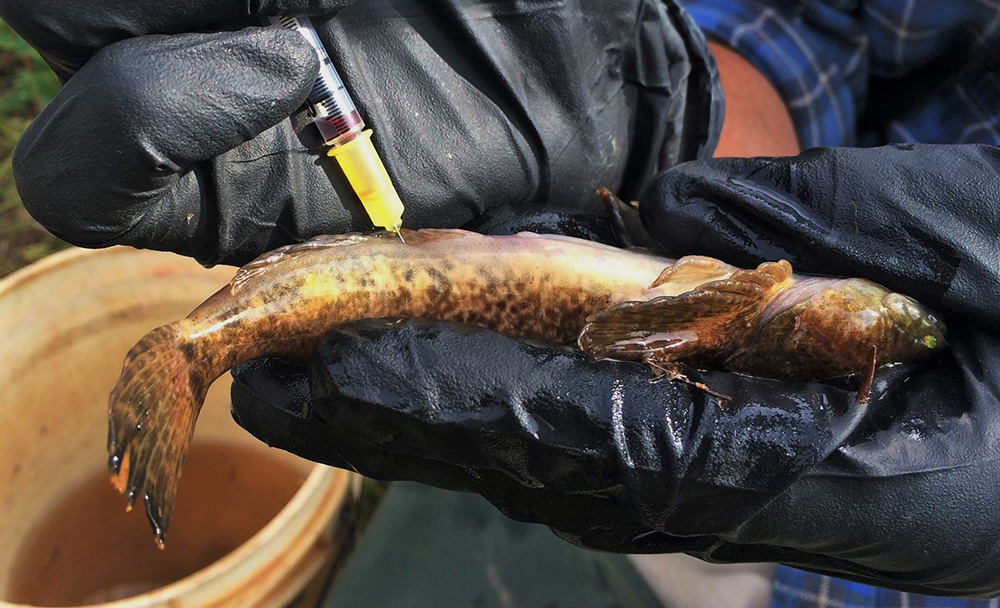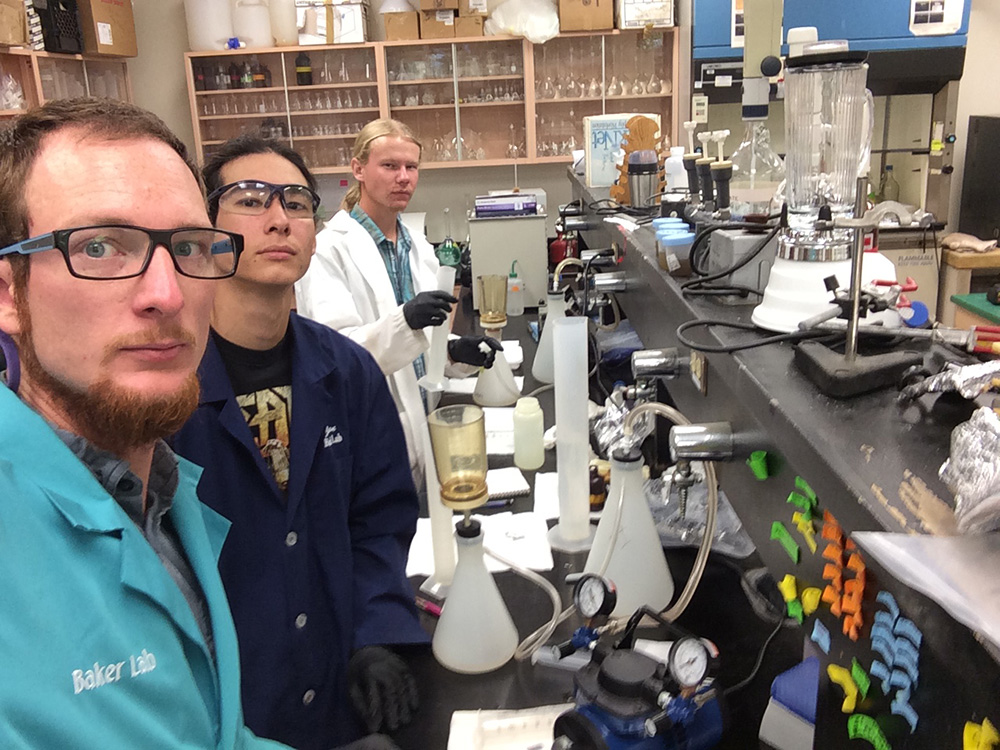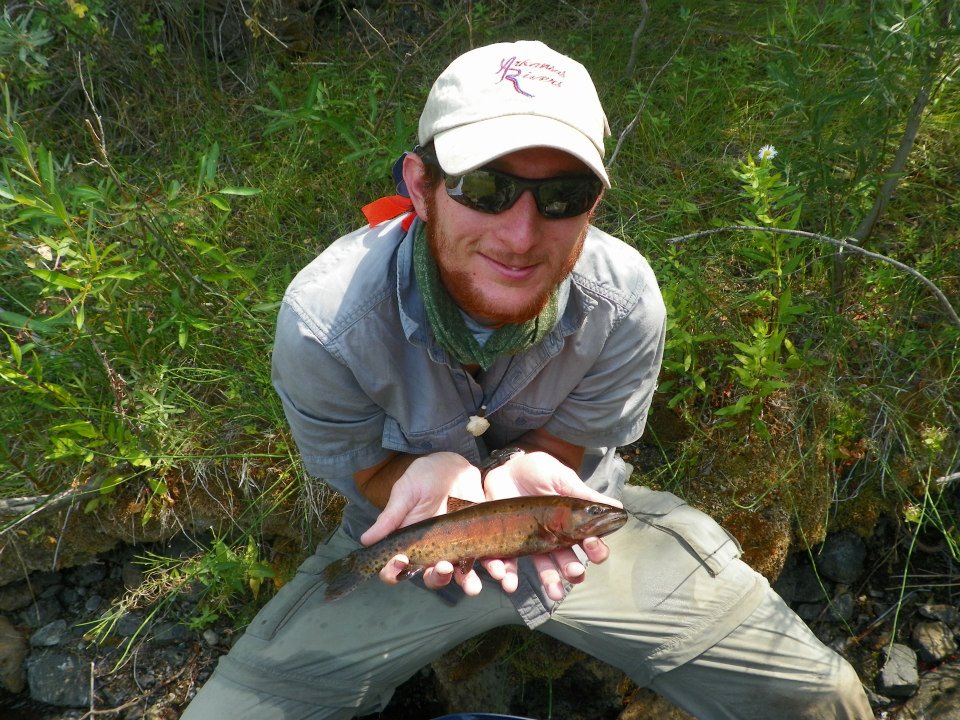Managers and ecologists are under increased pressure to quantify and understand how stressors, natural or anthropogenic, interact to affect environmental and ecological change. While most research has focused on single stressor effects at one level of ecological organization, it is becoming increasingly apparent that many ecosystems are affected by multiple stressors and their interactions can have negative consequences across many levels of ecological organization.
Yet comparatively few studies have assessed the interactive effects of multiple stressors, especially in freshwater ecosystems.
Oil and natural gas development has only recently been viewed as a stressor and limited data exists on its effects to stream health. Stressors shown to be associated with development activities include increased sedimentation, nutrients, total dissolved solids, metals, and decreased riparian cover and organic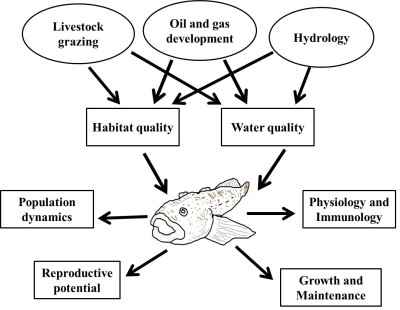 matter inputs. Grazing activities can negatively impact streams directly by reducing riparian cover, decreasing bank stability, increasing sediment and nutrient loads, and indirectly by decreasing allochthonous inputs and increasing stream temperatures. Furthermore, highly variable, natural or altered, flow regimes in headwater streams may create stressful conditions that threaten biodiversity of aquatic plants, insects, and fishes. These three stressors have been shown to individually affect stream biota, but less is known regarding how these stressors interact to affect ecological change.
matter inputs. Grazing activities can negatively impact streams directly by reducing riparian cover, decreasing bank stability, increasing sediment and nutrient loads, and indirectly by decreasing allochthonous inputs and increasing stream temperatures. Furthermore, highly variable, natural or altered, flow regimes in headwater streams may create stressful conditions that threaten biodiversity of aquatic plants, insects, and fishes. These three stressors have been shown to individually affect stream biota, but less is known regarding how these stressors interact to affect ecological change.
No single indicator or group of indicators can provide all the information needed to assess long-term stress in stream ecosystems. Biological indicators of stress with rapid response times (e.g. physiology, immunology, histology) can provide a mechanistic basis for understanding ecological endpoints, especially for population dynamics; however, results may be ecologically less relevant from a management standpoint. Broader ecological indicators (e.g. populations, communities, and ecosystem processes) tend to respond more slowly and by the time responses are detected, undesirable effects have likely already occurred. Thus, combining indicators from multiple levels of ecological organization that vary with response time can provide stronger support for observed patterns related to stressor effects.
The goals of my dissertation research are to assess the individual and interactive effects of stressors related to oil and natural gas development, livestock grazing, and natural annual variation in hydrology on: 1) fish physiology and immunology (e.g. glucose, cortisol, immunocompetence), 2) food resource quality and quantity (e.g. benthic macroinvertebrates, algae, and terrestrial invertebrate inputs), and 3) fish population dynamics (e.g. abundance and size-structure). By understanding the interactions between anthropogenic and natural stressors, we can better inform managers and conservation biologists of best management practices that may be needed to reduce negative effects for chemical, physical, and biological processes in stream ecosystems.
Contact
Richard Walker, Ph.D. Student
Program in Ecology
Department of Zoology and Physiology
Wyoming Cooperative Fish & Wildlife Research Unit
Dept. 3166, 1000 E. University Avenue
Laramie, WY 82070
rwalke15@uwyo.edu
phone: (479) 438 1986
Annika Walters, Assistant Unit Leader
U.S. Geological Survey,
Wyoming Cooperative Fish & Wildlife Research Unit
Department of Zoology & Physiology, University of Wyoming
Dept. 3166, 1000 E University Ave
Laramie, WY 82071
annika.walters@uwyo.edu
Project Lead
Richard Walker: Richard is a doctoral student in the Program in Ecology at the University of Wyoming. His research interests cover a broad spectrum within the field of aquatic ecology, ranging from population and community ecology, conservation biology to ecosystem processes. His current research focuses on understanding the individual and interactive effects of multiple stressors on ecological responses in headwater streams. MORE »
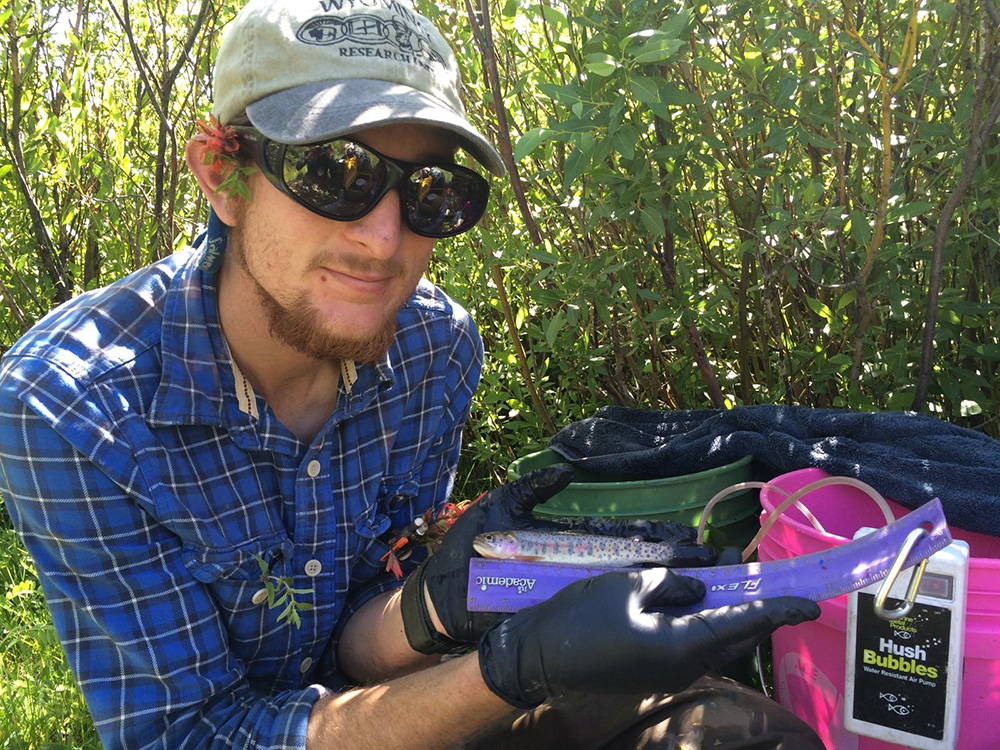
Timeline
Data collection for this project was initiated in 2012. Each year from the initiation of the project, until 2016, fishes will be collected during summer, to assess changes in population dynamics related to energy development and annual variation in hydrology. The summer of 2015 marked the initiation of efforts aimed at quantifying resource availability and quality, as well as the physiological and immunological responses of fishes related to these previously mentioned stressors. Data analysis is currently being accomplished in tangent with ongoing data collection.
Funding & Partners
- Wyoming Landscape Conservation Initiative
- Program in Ecology, University of Wyoming
- Zoology and Physiology Department, University of Wyoming
- Western Division of the American Fisheries Society


